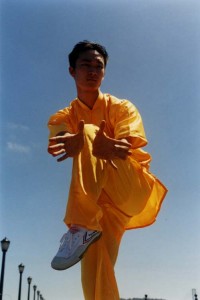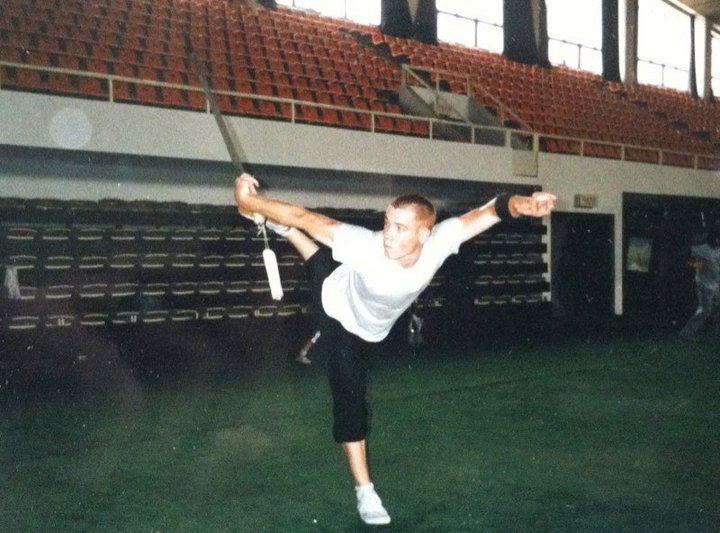Interview with longtime Taichi and Kungfu practitioner Sandra Balint.
Growing up training at the Capital District TaiChi and Kungfu Association, I remember at every seminar, every school demo, every event- there was one woman always there. She was always helping to organize, prepare, clean up and TAKE PHOTOS! I knew she was a dedicated, long time student of my Shifu, Jiang Jianye.
As I got older, I learned more about this woman, Sandra Balint. Throughout all the years, shes always been there training in class, leading class, writing articles, and yes- taking photos:)
With great appreciation of her dedication to the arts, Shifu Jiang Jianye and CMAA I asked Sandra for an interview. I knew she would have a lot to share, a lot of great knowledge we could learn from.
Please enjoy:)
How long have you practiced martial arts? Chinese Martial Arts?
Sandra: For twenty-two years. I began on March 10, 1990 on Colvin Avenue before it was officially open. Sally Meierhoffer, my partner eventually in Mu Lan Fan and Mu Lan Chuan demonstrations, began on the same day. At this time Grandmaster Jiang had only been in the country seven months. He didn't speak very much English, but that didn't matter, he moved so elegantly, you wanted to copy what he did.
How and why did you begin studying?
Sandra: As mentioned, I began studying over two decades ago. I saw an ad for a Beginner Tai Chi class in Knowledge Network, a brochure for adult education courses in the capital region, and decided to sign up. Since I had wanted to study this beautiful discipline for years, I thought this an excellent opportunity.
Studying with Shifu Jiang Jianye for so long, what has your relationship been like? Its rare to find a student who stays with one teacher for so long, why have you decided to do so?
Sandra: Grandmaster Jiang Jianye is a very unique man and an excellent martial arts teacher. He knows Tai Chi, Kung Fu and Qi Gong and he has a broad range of martial arts knowledge, training and skill. He also knows his students' characters and abilities and invests in them according to their needs and innate talents. He has a high work ethic, an undaunting and competitive spirit, a deep compassion for others and a very deep love and respect for martial arts.
What have been the most significant influences in your study/practice?
Sandra: There have been many influences in my study and practice. But the three most significant remain: Jiang Jianye, Zou ZhaoLan and LuYuzhi, my three teachers in the order in which they came into my life. And now a fourth teacher: Lucas Geller. The different masters that I have had in workshops from 1992-2012+ at Master Jou Tsung Hwa's Tai Chi Farm (now Loretta Wollering's Tai Chi Gala) have also had a big influence on my life, as have the masters that Teacher Jiang has brought to the studio over the years including, Professor Li DeYin, Grandmasters Chen Zheng Lei and Pan QingFu, Master Diane Naughton, Master Malee Khow and Dr. Jay Dunbar.
Do you have any practice tips?
Sandra: Practice. Practice. Practice. But make it fun by varying the routines you do on a rotating schedule. If you are a person who works, practice during your lunch hour to relieve stress. If you are older, try to do it even if you don't always feel up to it. It will make you'll feel better. Try to practice out of doors so that you can hear the birds, squirrels, branches creak;and feel the sun and breeze on your skin; and the smell of grass, leaves and flowers, and the nip of the season in the air. Commune with nature. Go to a local park if you can. Play music while your practice. It will enhance the experience. Dress according to the weather and make sure you stay hydrated. And around competition time put in the extra time to repeat the parts of the routines you are unsure of. Make your practice time efficient, effective and pleasurable.
Do you have any suggested “study material”(influential books, videos, websites, blogs etc.)?
Sandra: All of the above. Tai Chi Magazine is a great source as is Kung Fu Magazine and Kung Fu's ezine. Not only are they good sources of who's who in today's martial arts world, they give you information on what's happening gobally and what books, videos and DVD's are out there to aid your study. And of course the net is an amazing place for information. It's incredible what's available at the press of a key. Also don't forget your local library. Most people are not aware that the Pine Hills Library in Albany has a section on their second floor devoted to Chinese books and CD's. Much of the material I used as resources when I first began I got from reseaching libraries for books I couldn't find in bookstores or I couldn't afford. Remember the net as we know it today wasn't in place. I also suggest you read more than one book on the subject so that you have a well rounded view. Facts can sometimes be a shifting thing depending on who wrote it and when, and what information was a available at the time.
What are your feelings about taichi as a martial art? A healing art?
Sandra: Tai Chi and Kung Fu are wonderfully physical and rewarding exercises for the way they strengthen the body, the spirit and the mind. I stopped doing Kung Fu last year in 2011 but loved the 7 years that I was a part of it. It is an invigorating and exciting activity. The three section staff was my favorite weapon. As for Tai Chi, it remains as beautiful to me as the day I started, even more so, now that I have come to understand it better. So both Tai Chi and Kung Fu are healing. I have seen many people become stronger, happier and more peaceful through each of these disciplines. It depends what your needs are and how that discipline speaks to you on a gut level. And of course, whether you are able to do the hard martial arts as you age or after you have sustained a lasting injury, is another thing. Certainly we cannot forget Qi Gong. Everyone, Tai Chi and Kung Fu players, young and old alike, always need the healing power that only Qi Gong exercise can bring. Although this is not a martial art, it should be a part of a martial artist's regime to replenish energy and maintain good health.
What are your feelings about “modern taichi”? Simplified routines and competition routines?
Sandra: The more you know, the more you appreciate what the generations have contributed to creating these various disciplines. The simplified forms make Tai Chi more excessible to a larger number of people because of their modified forms. All have their purpose, and past purposes in the evolution of Tai Chi, and certainly all have their benefits. Again the more you learn the more you appreciate the nuances and what the different masters have contributed to this big broad umbrella that we call Tai Chi.
Any Interesting or unique experiences from your years of study that you’d like to share?
Sandra: When the different masters came to our studio to teach us workshops was very special. When "Iron Fist", Pan Qing Fu came he showed us his fists with their calloused knuckles. He said that they were like steel when he hit people. I asked if he would just lightly tap my head so I could see how they felt. He didn't want to do it for fear he might hurt me. Then he gave in and obliged me. I felt barely a brush of his fist pass my forehead, but the next day I had a brusie in the spot that he touched. I was thrilled. When I saw him again several years later at Malee Khow's competition in Connecticut, where I was competing and he was performing, he remembered my name and said hello, "Sandra". What a generous martial artist!!
What are your personal favorite routines and why?
Sandra: I love Tai Chi fan routines. I love how the movements can make the most uncoordinated person graceful and elegant over time. And I love Wu style. I love it's back and forth pivoting and deep White Crane bends, how it slants, and moves and unfolds like a beautiful creature as you move across the floor.
What are your recommendations for those interested in studying (taichi/kungfu)?
Sandra: I recommend starting with a well-trained teacher invested in his or her students. One that has good character: kind, patient, modest and is a task master. One who wants to see you advance in your training. One that will expose you to demonstrating your skills in front of the public to increase you confidence; one that will put you into competitions to improve your courage, stamina, will power and knowledge. And one that if you don't want these things will encourage you do the things necessary to maintain good health. One that makes coming to class fun because there is an atmophere of friendiness, acceptance, tolerance and good energy. Like the kind of classes I have had with Grandmaster Jianye Jiang and what I now have with Shifu Lucas Geller.
Pease feel free to write about as much or as little about any particular question or area of taiji/kungfu that interests you.
Response: Thank you, Shifu Geller, for giving me this opportunity to share with others. Martial Arts is a wonderful way to experience life. May you and your students have many, many years of wonderful memory making times together!!
-
Sandra really appreciate you taking the time to do this. I truly value the amount of time you've spent with Shifu and know how much you can teach us all. Honestly, the real reason I thought to ask for an interview with you was because I knew that there was so much that I could learn from you! However, I thought it better to ask for your knowledge and wisdom in a format that I could share with everyone (CMAA student and world at large) via the CMAA blog on our website. Thank you for sharing!
Shifu (Xiao:)




